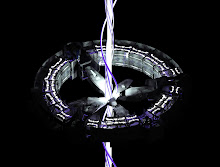An Architecture of Selection
A life cycle - propagate then decay
Optimized Architectural relationships prosper and grow into ubiquity, the herd is thinned only the fittest survive.
When a flexible space adapts to a specialised optimal state it only remains optimised while the function remains active. Post-activity, spatial requirements remain then become progressively de-optimised and degrade, this regressive state can be called the decay of the optimal space
An everyday example is a gathering of friends at a house party a few friends migrate to the kitchen to assist in preparations the space is smaller and feels cosy full of life, the warmth of the stove the action of the kitchen, more guests arrive the party moves to the lounge, the party seeks to find the optimal balance between space and density for 6 people in a domestic kitchen feels activated but 6 people at a night club is lifeless, as the party grows the activation of space inside is excessive, it spills into the back yard and then the front yard, guests numbers increase, revellers spill on to the street awaiting transport to a larger venue, activities die down, guest numbers steadily drop, spaces steadily regress, the kitchen is once again the focal point.
When a spatial arrangement no-longer suits inhabitant’s needs, change occurs, a selection of new requirements, new arrangements, these new conditions lead to a new optimization evolves.
skip to main |
skip to sidebar
Followers
Blog Archive
-
▼
2011
(133)
-
▼
August
(56)
- An Architecture of Selection A life cycle - propa...
- AN ARCHITECTURE OF.....
- All fixed set patterns are incapable of adaptabili...
- Adaptive Bloom
- Marilena Skavara – Adaptive Fa[ca]de
- Fibre Composite Adaptive Systems / Architectural A...
- Architecture & Design Quotes
- WEEK FIVE
- King’s Cross Station Canopy
- Parametric Potential
- Santa Caterina Market Canopy - EMBT Architecture
- Civil disobedience
- Civil Disobedience - Tent Embassy
- Flexible Architecture
- Just Breathe
- Untitled from peter on Vimeo.
- Architectural Circadian rhythm
- Amorphic Architectural Intervention
- Welcome to the Fold - paper fold experimental stru...
- responsive + Kinetic
- Architecture is politics.
- All the world's a stage
- ARCHIGRAM
- the metamorphosis
- No title
- ASOP PARIS FITOUT
- Facade + Adaptation
- VIEWS OF THE HILL
- Capital Hill + Amorphic
- Toyo Ito + Strangler
- Screening
- Flat Tower
- NonLin/Lin Pavilion by Marc Fornes/THEVERYMANY
- Adaptation Definition
- http://vimeo.com/16902424 New Angles by SuperNatu...
- Homeostatic Facade System
- 3D PROJECTION MAPPING
- ENVISION - Step into the sensory box
- diaphragm_2.avi
- Dynamic facade "Kiefer technic showroom"
- Kafka Centrum, Kinetic Architecture by Jorge Fontan
- FUTURE VISIONS
- Questions??
- Canberra 1:250 000 Geological Map 1953 & 1964
- Contemporary Monumentality
- Nationhood + Cultural Identity + Architecture
- Virtual
- Distributed
- Mobile
- Flexible
- Systems of Governance
- Sem2 2011 CAPITheticAL project
- Geofront COHE sem1 2011
-
▼
August
(56)

No comments:
Post a Comment